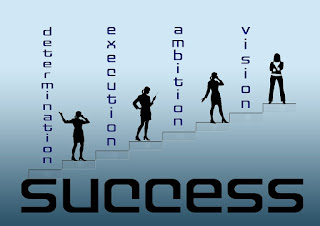 |
| Woman achieving success |
Most resolutions are intended outcomes. “I am going to drink less caffeine in 2020.” “I’m going to quit smoking.” “I want to lose weight before my daughter’s wedding.” Whatever your resolution, you need to set goals to help you achieve it.
Goals are based on the step by step process for achieving an outcome. What is necessary to drink less caffeine? Perhaps the first step is to identify what you drink with caffeine, when, and even why. A journal may help with this step. Do you need to drink three cups of caffeinated coffee before work in order to feel alert? Do you drink a caffeinated soda in the afternoon because that is what is available in the vending machine?
Why do you need so much caffeine in the morning? Perhaps you are not getting enough sleep. Then your goal might be “I will turn off my phone and computer a half hour before bedtime,” or “In January, I will get in bed a half hour earlier than I usually do, to see how that feels in the morning,” or even “I will call my physician and ask for a referral for a sleep study” if you suspect there is a medical cause for your morning tiredness.
To curb the afternoon caffeine-consumption break, try goals such as “I will bring a full water bottle to work and drink that in the afternoon,” or “I will pack snack-sized fruit juice bottles in my lunch in January,” or even “I will ask HR if they could request some healthier drinks in the vending machine.”
Remember, goals are short term objectives that build up to accomplishing your 2020 healthier lifestyle resolutions.
